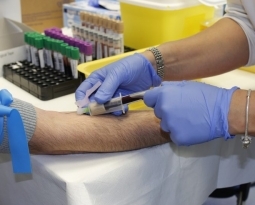Potential R&D Activities in Four Major Industries
Oftentimes, we get stuck in our notion of our industry and what is considered innovation in the field. But R&D includes failure as well. Which means if you attempt to develop a new process or a new product, you likely still qualify.
Manufacturing Industry
The manufacturing industry has always been motivated by innovation; development of new equipment, new processes, and new products, aiming to increase productivity, efficiency, and capabilities.
Some examples of potentially qualifying activities include:
- Designing and developing custom tooling and fixtures
- Developing prototypes to meet various customer specifications and requirements
- Redesigning a manual process into an automated one through software development
- Designing, building and testing first article prototypes
- Performing custom fabrication specific to a customer’s need
- Developing new or improved processes to increase yield or overall performance
- Improving quality assurance processes to increase product reliability
- Developing new/improved process or products to meet federal or state regulatory requirements
- Developing new or improved techniques to increase performance of a product or process
Technology & Software Industry
The software and technology industries have always relied on innovation, changing the world as much as the world changes it. The development of new techniques, new applications, and new softwares are endless. The activities that constitute R&D are pretty clear in this industry, but here are some examples:
- Software for sale
- Internal Use Software
- Initial releases of application software
- Algorithms written for fundamental, basic or underlying computer processes
- Architectures
- Database management techniques
- Software systems
- Software developed as part of a hardware product wherein the software interacts directly with that hardware to make the hardware/software package function as a unit
- New or improved compilers
- Operating systems
- Specialized technologies (eg. image or signal processing, AI, speech recognition)
- Mobile applications
- Video games
- Artificial Intelligence
- Virtual Reality
- Augmented Reality
Life Sciences Technology
The life sciences industry has always been driven by R&D and innovation. As technology expands and populations grow, the industry has to build out better, more efficient pharmaceuticals, medical devices, formulas and technologies and so on. But there can be more innovation involved in this industry:
- Designing and formulating new drugs and therapeutics
- Designing and developing new or improved medical devices
- Developing or improving drug delivery mechanisms
- Developing new or improved testing and analytical methods and procedures
- Testing therapeutic agents and applications
- Designing or conducting clinical trials
- Performing long-term safety and pharmacovigilance studies
- Researching drug-drug interactions and relative efficacy compared to other drugs
- Investigating potential new indications and/or new patient populations for existing drugs
- Developing new or improved manufacturing processes
- Ensuring that product requirements and specifications adhere to FDA and industry standards
- Automating processes using computer/data technology, AI, or robotics
- Creating prototypes
- Developing software
Healthcare Industry
The industry regularly works to address the needs of aging populations, trends in telehealth (or the sudden need for extensive telehealth options thanks to a sudden and unexpected pandemic…), and value-based care. It’s common to see software (like ERMs) as an R&D activity in this industry, but here is a more comprehensive list:
- Software applications for telemedicine or virtual visits
- Software applications to enhance delivery of healthcare management services
- Algorithms to enhance fundamental or underlying computer processes
- ERM software solutions
- Software to enhance compliance with evolving HIPAA regulations
- Blockchain for healthcare applications
- Internet of Medical Things devices to monitor, collect, analyze and transmit healthcare data.
- Patient-engagement tools
- Artificial intelligence for various tasks (nursing-related, administrative, etc.)
Are you developing new technology for an existing application? Did you know your development work could be eligible for the R&D Tax Credit and you can receive up to 14% back on your expenses? Even if your development isn’t successful your work may still qualify for R&D credits (i.e. you don’t need to have a patent to qualify). To find out more, please contact a Swanson Reed R&D Specialist today or check out our free online eligibility test.
Who We Are:
Swanson Reed is one of the U.S.’ largest Specialist R&D tax advisory firms. We manage all facets of the R&D tax credit program, from claim preparation and audit compliance to claim disputes.
Swanson Reed regularly hosts free webinars and provides free IRS CE and CPE credits for CPAs. For more information please visit us at www.swansonreed.com/webinars or contact your usual Swanson Reed representative.

















